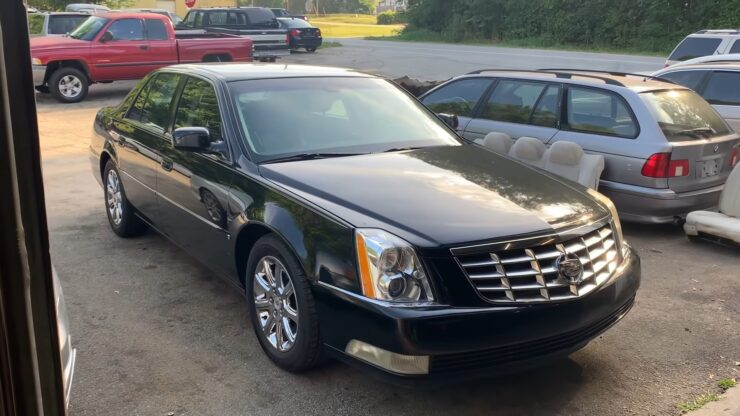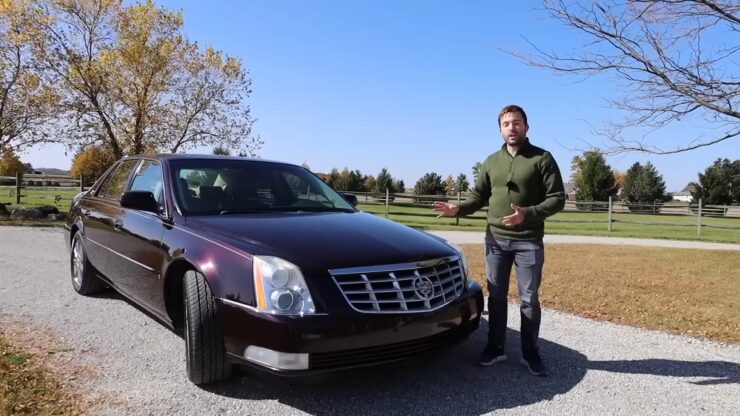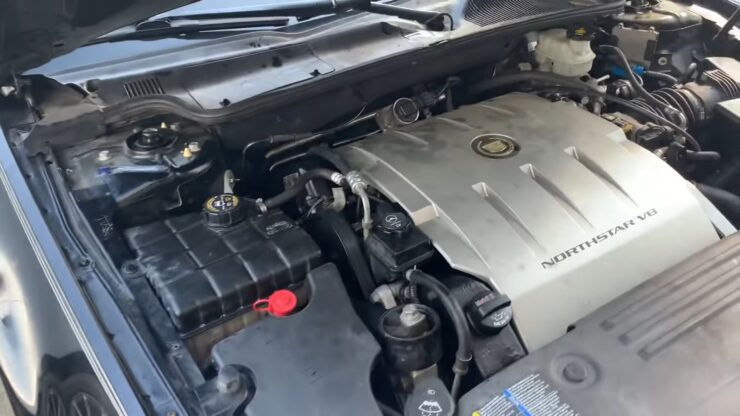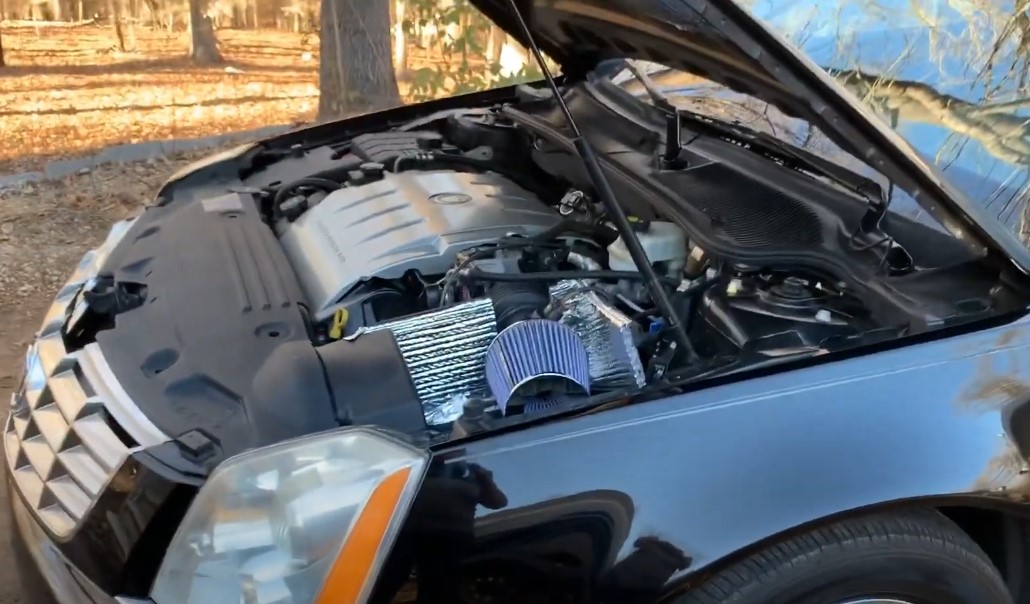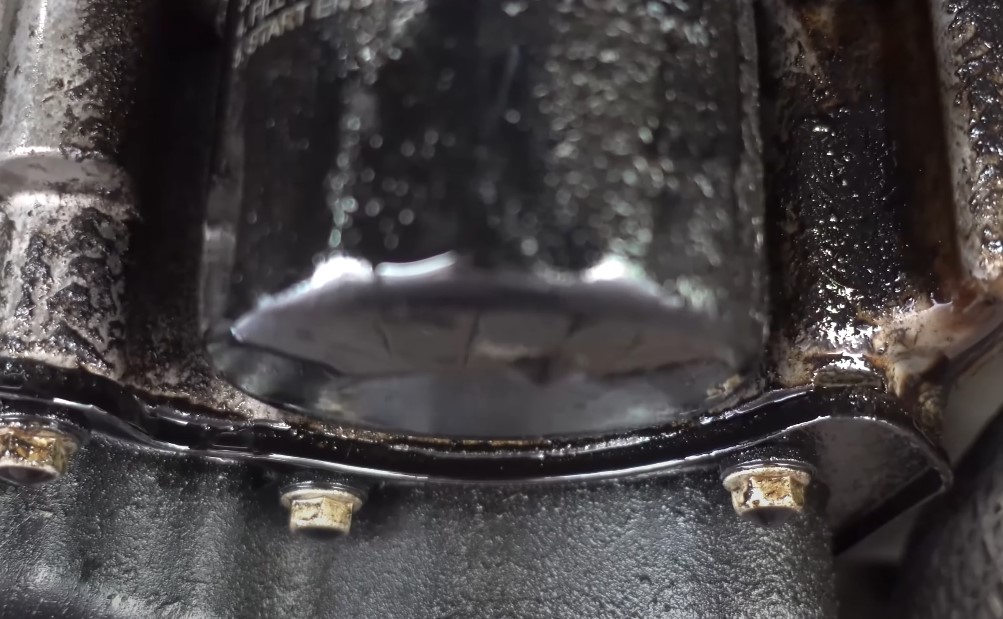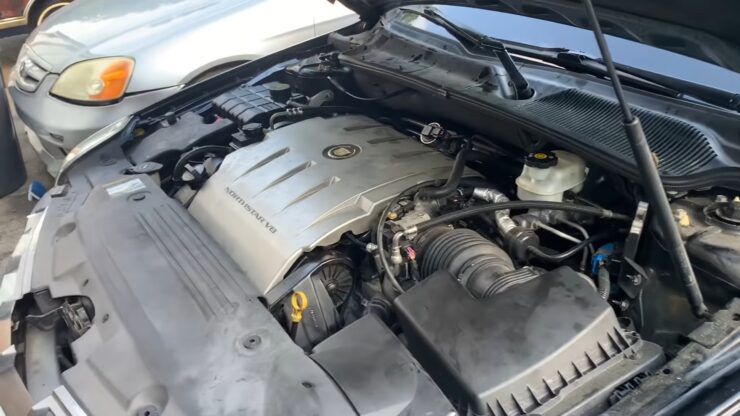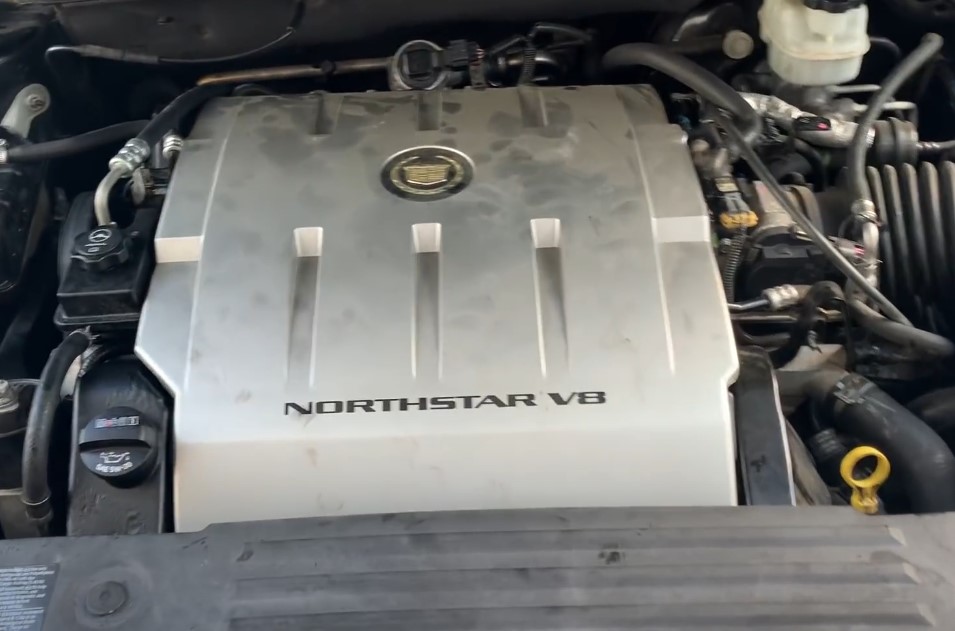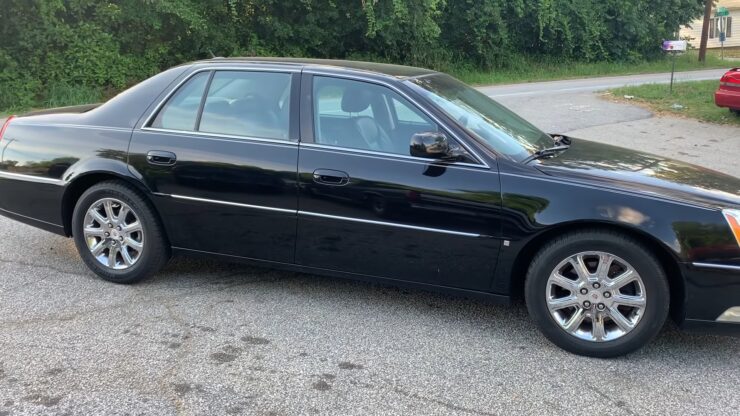The Cadillac DTS, a renowned luxury sedan, was manufactured by General Motors from 2006 to 2011. Throughout its production span, every model was equipped with the Cadillac Northstar V8 engine, ensuring robust performance.
A well-kept DTS tends to retain its value in the second-hand market, often boasting an engine that still has a lot of vitality.
However, the 2006 Cadillac DTS faced recurring engine issues, which continued across all five production years due to the consistent use of the same engine.
Below, we will discuss seven frequent challenges associated with the Cadillac DTS Northstar engine and their typical solutions.
We’ll also touch on the models that are similar to Cadillac DTS Northstar and see whether or not their engines also face similar problems. Let’s begin!
7 Issues To Watch Out
1. Carbon Accumulation in Cylinders
The Northstar engine is infamous for its tendency to accumulate carbon deposits within the cylinders. This excessive carbon not only impacts compression but also hastens the degradation of the pistons and cylinder walls.
To identify an excessive carbon buildup, one can inspect the spark plugs of each cylinder. Another method is to opt for a compression test, which will highlight cylinders that might be underperforming due to carbon deposits.
Addressing carbon accumulation is straightforward and cost-effective. Utilizing Sea Foam engine cleaner, both in the oil and fuel tank, can effectively clear out the carbon deposits from the cylinders. Other high-quality engine cleaners can also serve the purpose.
Does Cadillac STS Have This Problem?
The Cadillac STS, particularly models from 2008 to 2010, is known to experience significant carbon accumulation in the cylinders due to its direct injection engine technology.
This issue arises from the fuel injectors delivering gasoline directly into the combustion chamber rather than the intake port. Over time, carbon deposits can build up on the intake valves and within the combustion chamber.
Symptoms of this problem include engine misfires, reduced power, and poor fuel efficiency. To mitigate this, regular maintenance such as using high-quality fuel additives and periodic professional cleaning of the intake system is recommended.
Does Cadillac XTS Have This Problem?
The Cadillac XTS, especially models like the 2014 XTS VSport, also faces issues with carbon accumulation in the cylinders due to its direct injection system.
Owners have reported problems such as low idle performance and engine misfires, particularly noticeable at higher mileage. The buildup of carbon deposits on the intake valves and in the combustion chamber can lead to significant performance degradation.
2. Premature Piston Ring Wear Leading to High Oil Consumption
A prevalent issue with the Cadillac DTS Northstar engine is its oil consumption. Several factors can lead to excessive oil usage, with oil leaks being a common occurrence even in well-maintained engines.
The primary culprit behind the engine’s oil consumption is the premature wear of piston rings. Damaged piston rings allow oil to seep into the combustion chamber, mixing with fuel and air.
If your engine is consuming oil without any visible leaks, it’s likely that one or more cylinders have compromised piston rings.
The aforementioned carbon deposits in the cylinders are a significant contributor to the wear of these rings. Signs of excessive oil consumption include frequent reductions in oil levels and the emission of dark smoke from the exhaust.
To rectify this, the piston rings need replacement and regular engine maintenance. However, be prepared for a substantial cost, as replacing piston rings requires intensive labor.
Does Cadillac STS Have This Problem?
The Cadillac STS has experienced issues related to premature piston ring wear, leading to high oil consumption. Owners of models such as the 2005 STS with the 3.6L engine have reported significant oil consumption.
The problem often stems from stuck or worn oil rings, which fail to properly seal and control oil consumption. When the piston rings are not functioning correctly, they allow oil to seep into the combustion chamber, resulting in excessive oil burn.
Some STS owners have had to replace piston rings and valve stem seals to address this issue, which can lead to improved oil consumption rates.
Does Cadillac XTS Have This Problem?
For the Cadillac XTS, the issues with premature piston ring wear and high oil consumption are rare. However, issues related to oil consumption in similar GM models have been reported.
In some cases, piston rings can develop hard carbon deposits, causing them to stick and fail to seal properly. This can lead to increased oil consumption as oil bypasses the rings and burns in the combustion chamber.
While not as commonly documented for the XTS, such problems can arise, particularly if regular maintenance and oil changes are not diligently performed.
3. Oil Leaks from Valve Covers
The valve cover in the Northstar engine serves as a shield for the valves, safeguarding them from contaminants like dust, dirt, and other debris that might find its way under the hood. Additionally, it plays a crucial role in retaining oil within the engine.
Regrettably, these valve covers are prone to developing minute cracks and fissures, leading to oil seepage and a subsequent drop in the engine’s internal oil pressure. While the issue might seem trivial initially, it tends to escalate over time.
Signs of a leaking valve cover include the distinct odor of burning oil emanating from the engine compartment or even through the air conditioning vents. Other symptoms might encompass rough engine idling, misfires, and a noticeable decrease in oil levels.
The definitive remedy for this issue is to replace both the valve cover and its underlying gasket. Regularly inspecting for signs of oil leaks can help in early detection and prevention.
Does Cadillac STS Have This Problem?
The Cadillac STS has experienced issues with oil leaks from the valve covers. Reports from various sources, including car forums and automotive repair sites, indicate that the valve cover gaskets on these vehicles often deteriorate over time, leading to oil leaks.
This problem can result in oil pooling on top of the engine or leaking down onto other components, potentially causing further issues if not addressed. Owners have reported needing to replace valve cover gaskets and timing actuators to resolve these leaks.
Does Cadillac XTS Have This Problem?
Similarly, the Cadillac XTS is not immune to oil leaks from the valve covers. Owners of this model have also reported oil leaks, particularly from the valve cover gaskets.
These leaks can cause oil to seep out and collect in various parts of the engine bay, leading to visible oil stains and a potential risk of engine damage if the oil level drops too low.
The cost of replacing the valve cover gaskets on a Cadillac XTS typically ranges between $275 and $330.
4. Compromised Head Gaskets
Head gaskets play a pivotal role in averting oil leaks and ensuring optimal compression. The Northstar engine, across various production years, has been plagued with issues of blown head gaskets.
This problem persisted even before the Cadillac DTS was introduced and continued even after its production was halted by GM.
The primary culprit behind these blown head gaskets in the Northstar engine is the over-tightening of head bolts. When excessively tightened, these bolts tend to stretch, compromising their ability to hold the heads and gaskets securely.
This, in turn, leads to blown gaskets, subsequent oil leaks, and a loss in compression.
To mitigate this, it’s essential to ensure that the bolts are torqued according to factory specifications. If a gasket is blown, the only recourse is its replacement.
Does Cadillac STS Have This Problem?
The Cadillac STS has been known to experience head gasket issues, particularly in models equipped with the Northstar engine.
These engines, while advanced, have a history of head gasket failures primarily due to the aluminum block and head construction, which can lead to thermal expansion and contraction issues.
Symptoms of a compromised head gasket in the STS include white smoke from the exhaust, loss of coolant, overheating, and potentially oil contamination. Owners have reported that repairing or replacing the head gasket can be a costly affair, often ranging from $1,841 to $2,089.
Some owners have even opted for engine replacements due to the extensive labor involved in fixing the head gaskets.
Does Cadillac XTS Have This Problem?
The Cadillac XTS, while generally more reliable than its STS counterpart, is not completely free from head gasket issues.
There have been instances where owners have reported head gasket failures, which can lead to similar symptoms as seen in the STS, such as loss of coolant, white smoke from the exhaust, and engine overheating.
The repair costs for a head gasket replacement in the XTS are higher on average, ranging from $2,164 to $2,532.
Although these issues are less frequent compared to the STS, they are still a concern for some XTS owners, especially those with higher mileage vehicles.
5. Rear Main Seal Leaks
Consistent oil reduction and visible oil traces at the engine block’s rear might indicate a rear main seal leak in your Cadillac DTS Northstar engine.
This issue was particularly prevalent in Northstar engines produced before their integration into the DTS. Starting from the 2000 model year, Cadillac transitioned to using pressed rear main seals.
While this problem became less common in post-2000 Cadillac DTS and other Northstar-equipped models, the rear main seal remains susceptible to leaks.
If you spot oil seepage from the engine’s rear, a sealer might resolve the issue. Otherwise, a more expensive rear main seal replacement might be necessary.
Does Cadillac STS Have This Problem?
The Cadillac STS is known to have issues with rear main seal leaks. This problem often presents as a significant oil leak near the oil pan area.
Owners have reported that the rear main seal, which is designed to prevent oil from leaking between the engine and transmission, can fail over time.
This failure results in oil dripping from the bottom of the engine, particularly around the bellhousing area.
Addressing this issue typically requires replacing the rear main seal, and in some cases, additional gaskets such as the oil pan gasket may also need to be replaced to ensure a complete fix.
Does Cadillac XTS Have This Problem?
Similar to the Cadillac STS, the Cadillac XTS can also experience rear main seal leaks. This issue is characterized by oil leaks originating near the rear main seal area, often visible around the bottom of the bellhousing.
The rear main seal’s failure allows oil to escape, which can be identified by drips forming under the vehicle. Fixing this problem involves replacing the rear main seal and possibly the rear cover gasket to prevent further leakage.
It’s a common issue for many Cadillac models with similar engine designs, and addressing it promptly can prevent more severe engine damage.
6. Oil Pump Malfunctions
Another concern for Cadillac DTS Northstar engines is the potential failure of the oil pump, which can result in severe internal engine damage. A malfunctioning oil pump leads to decreased oil pressure, causing the engine to overheat and sustain damage.
Signs of a failing oil pump include a low oil pressure reading and an elevated engine temperature. The only effective remedy is to replace the faulty oil pump to avert potential engine damage.
Does Cadillac STS Have This Problem?
The Cadillac STS does not appear to have a widespread or routine problem with oil pump malfunctions. While there are instances of oil pump failure reported, these are not prevalent enough to be considered a common issue.
Does Cadillac XTS Have This Problem?
Similarly, the Cadillac XTS also does not show a significant pattern of oil pump malfunctions. There are individual reports of oil pump issues, but these are relatively rare.
7. Water Pump Issues
A recurrent issue in the 2006 Cadillac DTS engine, which could affect other DTS models, is the potential failure of the water pump.
Symptoms include coolant pooling under the engine, reduced coolant levels in the radiator, and engine overheating — all indicative of a malfunctioning water pump.
The solution is straightforward: replace the water pump. However, given its location at the engine’s rear, accessing and replacing the pump can be labor-intensive.
Many Cadillac enthusiasts maintain their vehicles diligently, ensuring they remain in top condition. Conversely, some might purchase a Cadillac beyond their budget, leading to potential neglect.
Does Cadillac STS Have This Problem?
The Cadillac STS, particularly models with the Northstar engine, has been reported to experience water pump issues. Common symptoms of a failing water pump in the STS include leaks, overheating, and abnormal noises.
Owners often notice puddles of coolant under the vehicle or elevated temperature readings on the gauge. These issues are typically due to leaks from the water pump, which can damage the drive and timing belts if not addressed promptly.
Does Cadillac XTS Have This Problem?
The Cadillac XTS also faces similar water pump issues, with leaks and overheating being the primary symptoms. Leaking water pumps can result in visible puddles of coolant on the ground, especially around the front of the engine.
These leaks are often due to worn-out seals or gaskets in the water pump. If not addressed, a faulty water pump can cause significant engine overheating, potentially leading to more severe damage.
Common solutions include replacing the water pump and inspecting the entire cooling system for any other related issues.
Maintenance Tips for Prolonged Engine Life
- Regular Oil Changes: Ensure you change the engine oil at recommended intervals using high-quality oil suitable for the Northstar engine.
- Coolant Checks: Regularly check the coolant level and ensure it’s free from contaminants. Flushing the cooling system at intervals can prevent potential overheating.
- Air Filter Replacement: A clean air filter ensures optimal air intake, improving engine efficiency and performance.
History and Evolution of the Cadillac DTS
The Cadillac DTS, an acronym for DeVille Touring Sedan, traces its roots back to the Cadillac DeVille, a nameplate that had been in use since the 1940s.
The DTS, introduced in 2006, was a direct successor to the DeVille and represented a modern evolution of Cadillac’s full-size luxury sedan lineage.
The design philosophy of the DTS was a blend of Cadillac’s rich heritage with contemporary aesthetics. With its bold grille, sharp lines, and distinctive LED tail lights, the DTS was a testament to Cadillac’s “Art and Science” design language.
The interior was equally impressive, boasting plush leather seats, wood trims, and state-of-the-art infotainment systems, reflecting Cadillac’s commitment to luxury and comfort.
Targeted primarily at the mature audience who valued comfort, luxury, and a smooth ride over sporty dynamics, the DTS found its niche.
The market response was positive, especially among long-time Cadillac enthusiasts and those looking for a traditional American luxury sedan experience.
The Northstar Engine Legacy
The Northstar engine series, introduced in the early 1990s, was General Motors’ answer to the European and Japanese luxury carmakers.
It was designed to offer high performance, reliability, and the latest in engine technology. Over the years, the Northstar became synonymous with Cadillac luxury.
While Cadillac has been known for its iconic engines, there are automobile enthusiasts, like Jeff Bezos, who have a penchant for collecting luxury cars like the glamorous Cadillac Escalade.
One of the standout features of the Northstar engine was its all-aluminum construction, which made it lighter and more efficient.
The engine also boasted dual overhead camshafts (DOHC) and four valves per cylinder, which was quite innovative for its time, especially for an American V8.
The Northstar engine wasn’t just about specifications; it was about delivering smooth, refined power. It set new standards for V8 engines, especially in terms of noise, vibration, and harshness (NVH) levels.
Its introduction marked a significant leap forward for Cadillac and helped the brand reestablish itself as a serious contender in the luxury car segment.
Performance and Specifications
The Cadillac DTS, powered by the Northstar V8 engine, was no slouch when it came to performance. The engine typically produced around 275 to 292 horsepower, depending on the specific variant and year.
Torque figures were equally impressive, with the engine delivering around 290 to 300 lb-ft, ensuring robust acceleration and a smooth driving experience.
In terms of acceleration, the DTS, equipped with the Northstar engine, could sprint from 0 to 60 mph in just under 7 seconds, a commendable figure for a full-sized luxury sedan of its era.
The top speed was electronically limited, usually hovering around the 130 mph mark.
When compared to competitors of its time, such as the Lexus LS (take a glimpse of the 2025 Lexus UX) or the Mercedes-Benz E-Class, the DTS held its own, especially considering its price point.
While some European competitors might have had an edge in terms of handling dynamics, the DTS, with its Northstar engine, offered a unique blend of American luxury and performance, making it a compelling choice for many buyers.
FAQ
It’s always a good idea to check the National Highway Traffic Safety Administration (NHTSA) database or with a Cadillac dealer for specific recall information related to a particular model year.
Additionally, due to some of the issues discussed earlier, it’s crucial to keep an eye on potential carbon buildup and ensure that the head bolts are torqued to factory specifications.
Conclusion
While the Cadillac DTS Northstar engine is known for its robust performance and luxury appeal, being aware of its common issues can help owners take proactive measures.
Regular maintenance, coupled with timely interventions, can ensure that the engine remains in peak condition for years to come.

